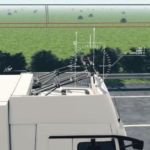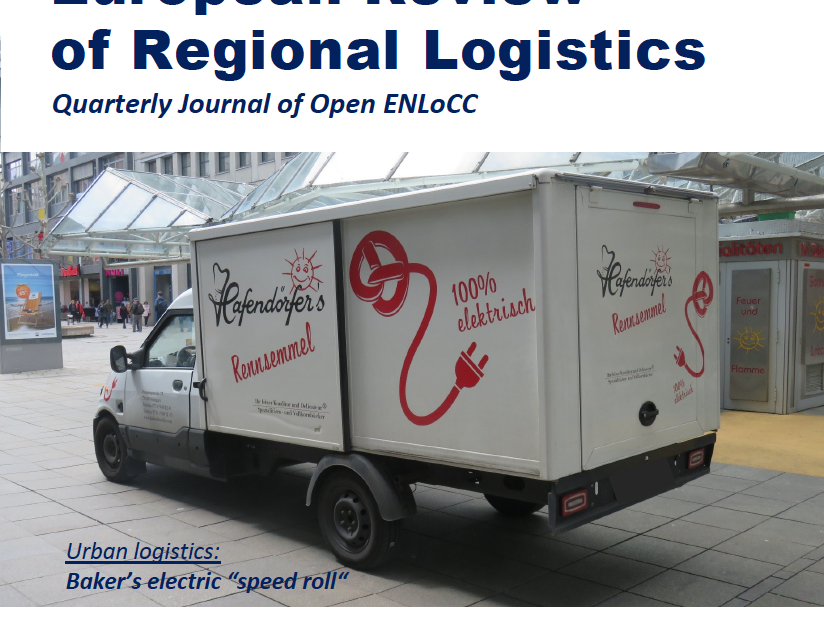Dear members and friends of the Open ENLoCC network
In this summer edition of the Review, we focus on methodology for urban and regional logistics plans as well as on lessons learned from them. While the guidelines for sustainable urban mobility plans (that is, mainly for mobility of people) have been updated these days, they now go along with guidelines for sustainable urban logistics plans. We present an excerpt from these new guidelines that focus on functional regions more than on cities within administrative borders.
In this context, we also present “lessons learned” from the project SULPiTER that came to an end this May after three years, resulting in urban logistics plans in seven European regions. There are plenty of lessons to learn from, which we also publish. You can find many more news and topics around regional logistics and regional logistics projects in this issue. Very noticeable is the idea of overhead wire for roads, so that electric trucks do not rely on large and heavy batteries.
We offer you more about the controversy around these projects. Furthermore, a set of articles has been published lately in an open access magazine. We outline those which deal with regional logistics and invite the reader to access them and read them at full length. In the past months, we have learned about the new role of Trieste in the Chinese “Belt and Road” initiative. The connection of East Asian connections and the port of Trieste apparently is far more than a century old. We found a text that on one hand comes along with the bombastic language of 19th century imperialism, but on the other hand clearly shows that “location” still has the same defining meaning for the economic position of a city and a region, and that in the case of Trieste this has been quite constant since the completion of the Suez canal.
This includes the obstacles, caused by national borders and natural barriers. Last not least there is change ahead: The “Review” will be adapted to support the new network structure of Open ENLoCC. We are still working out the future needs and the optimum positioning of our flagship.
Most likely, there will no longer be a “one size fits all” publication four times a year, but a separation of a less fequent content-based “Review” and a more continuous news presentation. We wish you all good reading! Martin Brandt Editor
- News from partners and logistics
 LCA South: New agreement with Henan Province At the end of May, the regional government of Carinthia together with LCA-South Managing Director Tarmann, welcomed high-ranking business delegation from the province … Read more
LCA South: New agreement with Henan Province At the end of May, the regional government of Carinthia together with LCA-South Managing Director Tarmann, welcomed high-ranking business delegation from the province … Read more - SULPiTER Project: Results and recommendationsThis May, the SULPiTER project was finalized, with seven regional logistics plans in seven European regions, as well as with a set of recommenda-tions. The SULPiTER project was 1st place … Read more
- Guide for Sustainable Urban Logistic Plans (SULPs)The excerpt below is from the SULP draft, prepared specifically for the sixth annual SUMP Conference in Groningen, 17-18 June 2019. The final version will be published at the CIVITAS … Read more
- 6th European Conference on Sustainable Urban Mobility Plans (SUMPs)The 6th European Conference on Sustainable Urban Mobility Plans took place on Monday 17 and Tuesday 18 June 2019 in Groningen, The Neth-erlands. The focus of the conference was on … Read more
- Classic text: Trieste and the Far East – a historical perspectiveThis year, we will celebrate the 150th anniversary of the Suez Canal, which opened in November 1869. Construction took about 10 years, and even before it opened it became pparent … Read more
- Reading Proceedings of EURO Mini Conference on “Advances in Freight Transportation and Logistics”The EURO Mini Conference on “Advances in Freight Transportation and Logistics” was held in Padova, Italy, in March 2018, organised by the Transportation Engineering Laboratory of the Department of Civil, … Read more
- Cargo bikes: Beyond parcel deliveryUsability of cargo bikes was demonstrated in Stuttgart on an event held by the Baden-Württemberg State Ministry of Transport. In the ongoing debate, we usually find cargo bikes mentioned when … Read more
- Trolley Truck controversy: Additional system creating too much overhead?
 The quest for electrification of goods traffic among other things has caused establishing of several test routes with overhead wire for heavy trucks. However, not the whole industry views this … Read more
The quest for electrification of goods traffic among other things has caused establishing of several test routes with overhead wire for heavy trucks. However, not the whole industry views this … Read more
